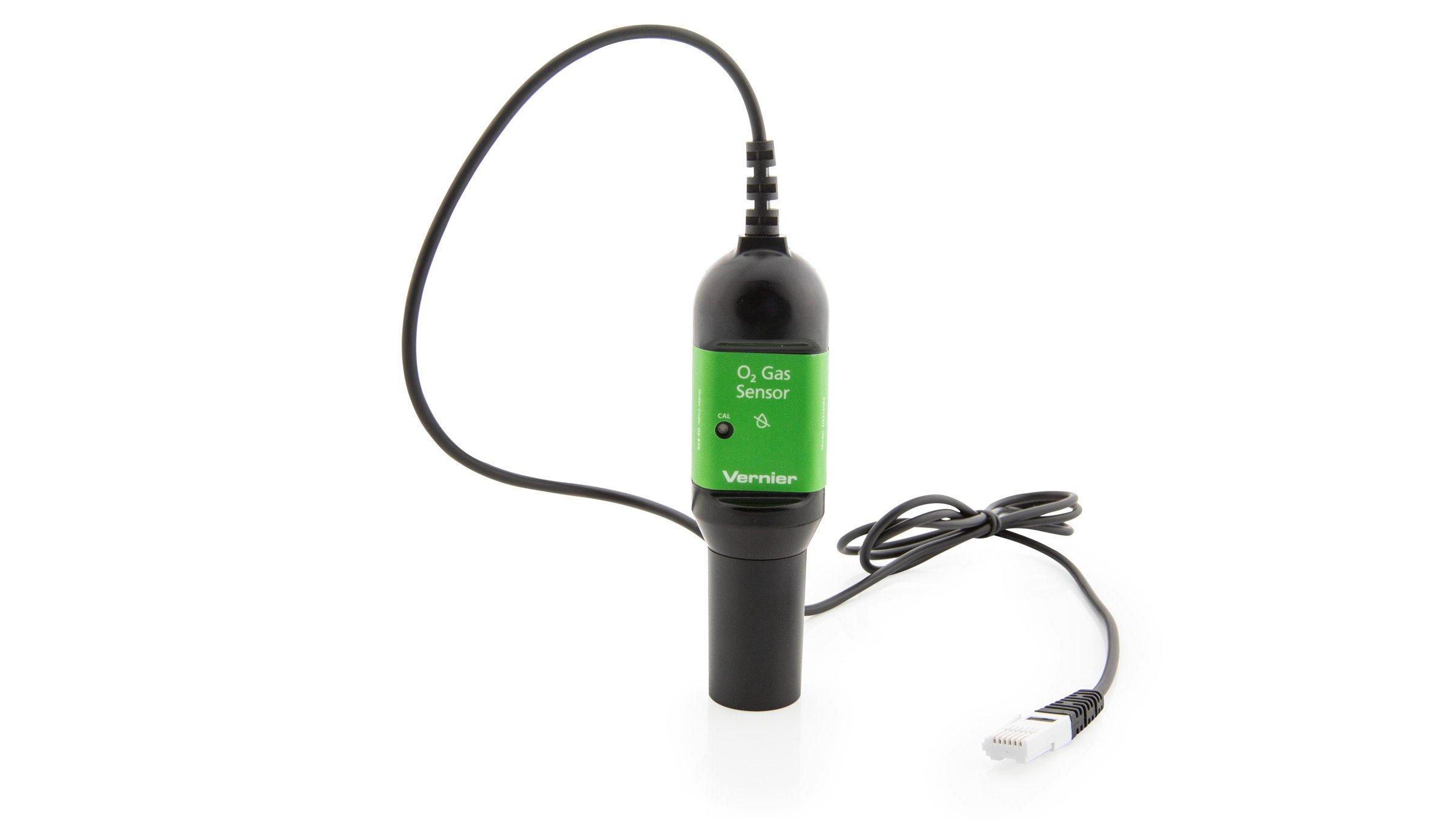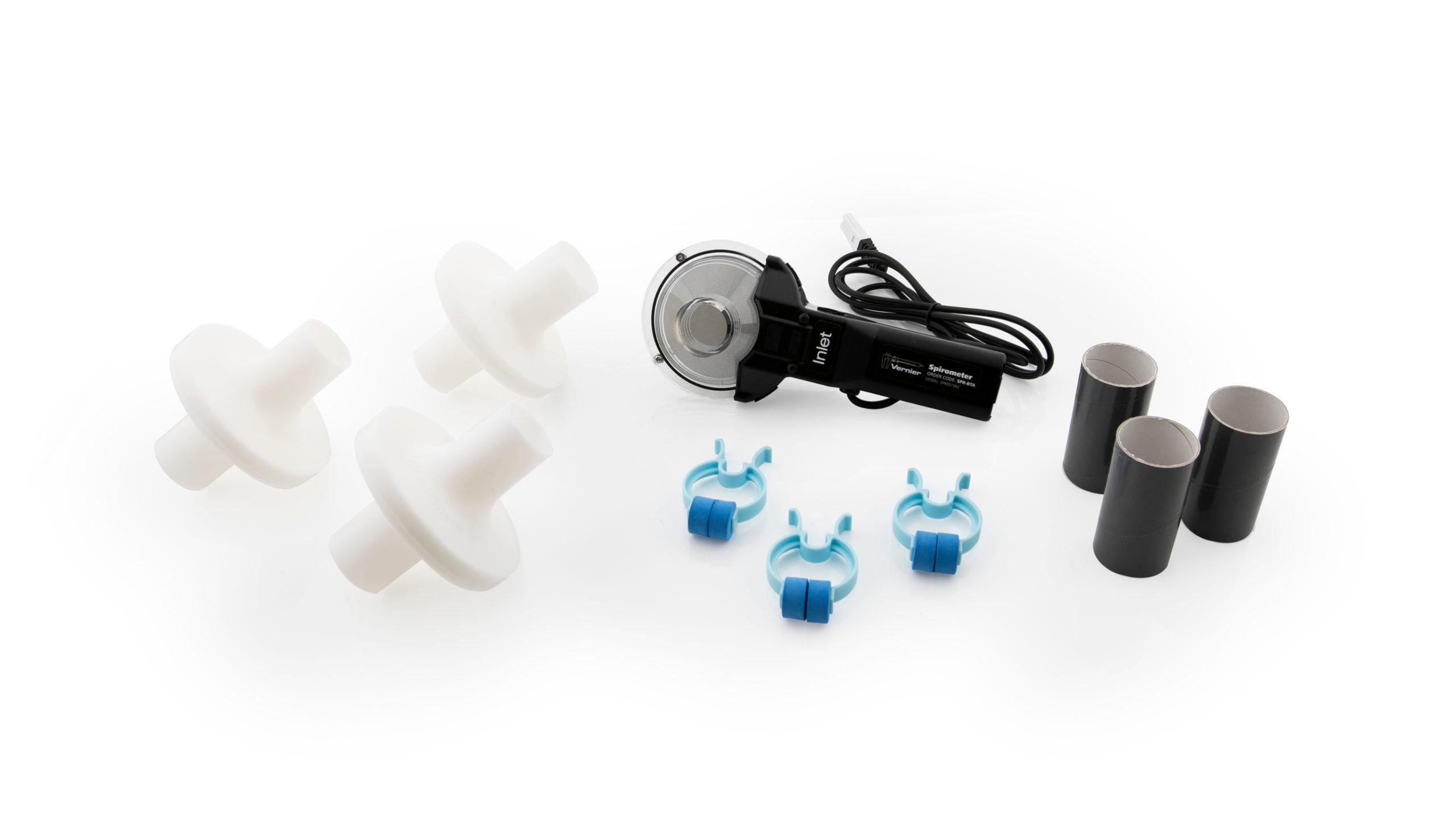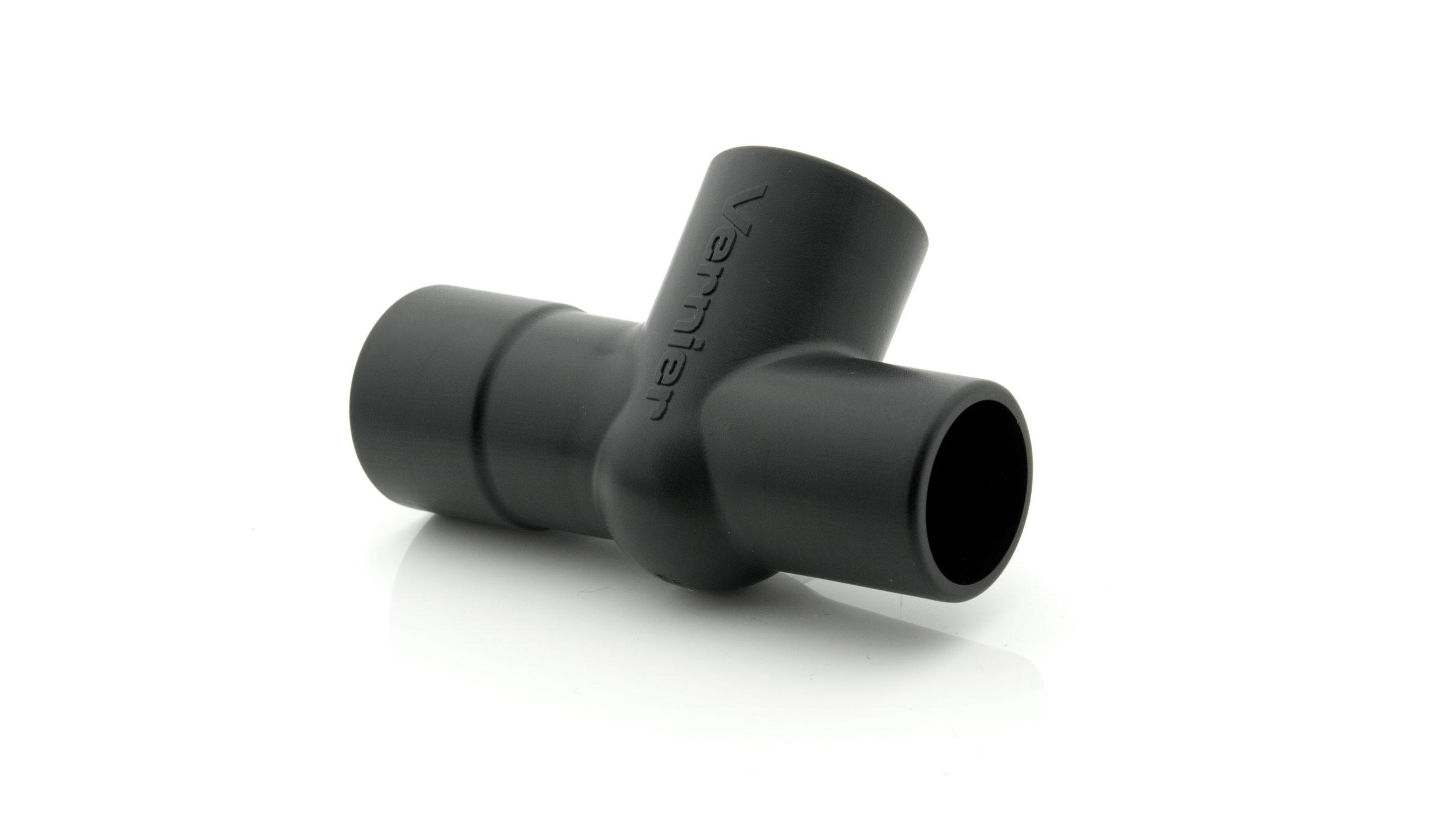
Introduction
Oxygen plays a key role in aerobic cellular metabolism, facilitating the conversion of glucose, protein, and lipids into usable energy. For every 6 molecules of oxygen used in the breakdown of glucose, 6 molecules of carbon dioxide are produced, along with water and adenosine triphosphate (ATP), according to the following equation:
The average person uses 200–250 mL of O2 per minute at rest. This may increase to 2–3 L per minute during heavy exercise and to twice that amount in highly trained athletes. The increase of oxygen consumption is proportional to the amount of work performed up to a maximum level which is dependent on conditioning. At the start of exercise, anaerobic metabolism is used briefly, but this quickly changes to aerobic metabolism as blood flow to muscles increases.
Objectives
In this experiment, you will
- Obtain graphical representation of tidal volume and change in O2 concentration with breathing at rest and after exercise.
- Calculate oxygen consumption at rest and after exercise.
- Correlate your findings with clinical situations.
Sensors and Equipment
This experiment features the following sensors and equipment. Additional equipment may be required.
Ready to Experiment?
Ask an Expert
Get answers to your questions about how to teach this experiment with our support team.
- Call toll-free: 888-837-6437
- Chat with Us
- Email support@vernier.com
Purchase the Lab Book
This experiment is #22 of Human Physiology with Vernier. The experiment in the book includes student instructions as well as instructor information for set up, helpful hints, and sample graphs and data.




